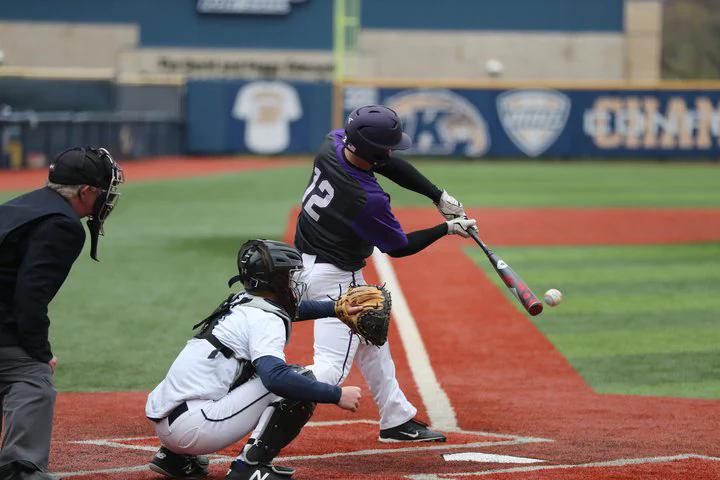Dive into the world of Baseball which is a game played between two teams, each consisting of nine players. The game is divided into nine innings, with each inning further split into two halves. In the top half, one team takes turns batting, aiming to score runs, while the opposing team fields to prevent this. In the bottom half, the teams switch roles. The team with the most runs at the end of nine innings wins the game.
The field is diamond-shaped, with four bases: home plate, first base, second base, and third base. The pitcher stands on the mound at the centre of the infield and throws the ball to the batter standing at home plate. The batter attempts to hit the ball and run around the bases. Scoring occurs when a batter successfully rounds all the bases and returns to home plate. The defensive team tries to get the batter out by catching the ball, throwing it to a base before the runner reaches it, or through other methods such as striking out the batter. An inning ends when the offensive team accumulates three outs.
The Diamond:
- The four bases form a diamond shape: home plate, first base, second base, and third base.
- The pitcher stands on the mound in the infield and pitches to the batter.
- The outfield is beyond the infield, bordered by the first and third baselines.
Gameplay: During their half of the inning, the defensive team’s pitcher throws the ball to the batter, who tries to hit it and reach a base safely. If the batter completes a full circuit of the bases and returns to home plate, they score a run. If the ball is caught by a defensive player or the batter is thrown out at first base, they are out. A batter can also be struck out if they fail to hit the ball after three pitches. Once the batting team gets three outs, the teams switch roles.
Baseball Stats– World of Baseball

“Baseball isn’t statistics. Baseball is DiMaggio rounding second.” — Jimmy Cannon
Although baseball doesn’t rely on a game clock, statistics play a major role in evaluating players’ performances. Stats help fans and managers alike compare players and assess their contributions to the game. Below are some common baseball statistics:
Offensive Statistics:
- Batting Average (AVG): The ratio of base hits to at-bats.
- Games Played (G): The total number of games in which a player has participated.
- At Bats (AB): The official count of times a player comes to bat, excluding walks or sacrifices.
- Runs (R): The number of times a player has successfully reached home plate.
- Hits (H): The total number of times a player reaches base, excluding walks or sacrifices.
- Doubles (2B): Hits that result in the batter reaching second base.
- Triples (3B): Hits that allow the batter to make it to third base.
- Home Runs (HR): Hits that result in the batter successfully rounding all four bases.
- Runs Batted In (RBI): The number of runs a batter contributes by enabling teammates to score (excluding double plays and runs scored due to errors).
- Stolen Bases (SB): The number of times a player advances to the next base without help from the batter.
- Base on Balls (BB): The number of times a batter is awarded first base due to four pitches outside the strike zone, also known as a walk.
- Strikeouts (SO): The number of times a batter strikes out, missing three pitches.
Pitching Statistics:
- Games Pitched (GP): The total number of games in which a player has pitched.
- Innings Pitched (IP): The total number of innings pitched by a player.
- Wins (W): The number of games a pitcher wins. A starting pitcher earns a win if they pitch at least five innings, their team leads when they leave the game, and the team maintains the lead.
- Losses (L): The number of games a pitcher loses.
- Win/Loss Percentage (PCT): Calculated by dividing total wins by the sum of wins and losses.
- Saves: The number of times a relief pitcher successfully finishes a game when the potential tying or winning run is on base, at bat, or on deck.
- Hits Allowed (H): The number of hits a pitcher gives up.
- Base on Balls (BB): The number of walks issued by a pitcher.
- Strikeouts (SO): The number of batters a pitcher retires with three strikes.
- Earned Run Average (ERA): The number of earned runs a pitcher allows per nine innings, calculated by multiplying total earned runs by nine and dividing by innings pitched.
Baseball Glossary– World of Baseball

- Balk: An illegal action by the pitcher that allows base runners to advance.
- Ball: A pitch that does not enter the strike zone and isn’t swung at.
- Base: One of four points on the diamond that runners must touch to score.
- Batter: The player who is at bat.
- Batter’s Box: The area next to home plate where the batter stands.
- Bottom: The second half of an inning.
- Bunt: A lightly tapped ball that stays within the infield.
- Catch: When a fielder catches a ball in flight and holds it securely.
- Catcher: The defensive player positioned behind home plate.
- Defense: The team currently fielding.
- Designated Hitter: A player who bats in place of the pitcher.
- Double: A hit that allows the batter to reach second base.
- Double Header: Two consecutive games played by the same teams.
- Double Play: A defensive play that results in two outs.
- Dugout: The seating area for the team not currently on the field.
- Fair Ball: A ball that lands in fair territory.
- Fielder: One of the defensive players on the field.
- Fielder’s Choice: A play where the fielder opts to put out another runner instead of the batter.
- Fly Ball: A batted ball that goes high into the air.
- Force Play: A play where a runner is forced to advance and can be put out.
- Foul Ball: A ball that lands or is hit into foul territory.
- Foul Territory: The area outside the fair playing field.
- Ground Ball: A ball that rolls along the ground.
- Ground Rule Double: A hit that bounces over the outfield fence, allowing the batter to reach second base.
- Home Plate: The base where the batter stands and the runner must return to score.
- Home Run: A hit that allows the batter to round all four bases without stopping.
- Home Team: The team hosting the game.
- Infield: The area within the diamond formed by the four bases.
- Infielder: A fielder positioned in the infield.
- Infield Fly: A fly ball that can easily be caught by an infielder.
- Inning: A segment of the game where both teams alternate offence and defence.
- Line Drive: A sharply hit ball that travels straight and quickly.
- Offense: The team that is currently batting.
- Out: The declaration that a player has failed to reach a base safely.
- Outfield: The area beyond the infield.
- Outfielder: A defensive player positioned in the outfield.
- Pitch: The act of throwing the ball toward home plate by the pitcher.
- Pitcher: The player who throws the ball to the batter.
- Quick Return Pitch: An illegal pitch meant to catch the batter off balance.
- Run: The score a player makes after rounding all four bases and returning to home plate.
- Runner: A player who is advancing on the bases.
- Safe: The call made when a runner reaches a base without being put out.
- Single: A hit that allows the batter to reach first base.
- Strike: A pitch that the batter swings at and misses, or does not swing at but is in the strike zone.
- Strike Zone: The area over the home plate where the pitcher aims.
- Tag: When a fielder touches a runner or a base with the ball to make an out.
- Throw: Propelling the ball toward a teammate or target.
- Top: The first half of an inning.
- Triple: A hit that allows the batter to reach third base.
- Triple Play: A play where the defence makes three outs in one continuous action.
- Umpire: The official who enforces the rules and makes calls during the game.

